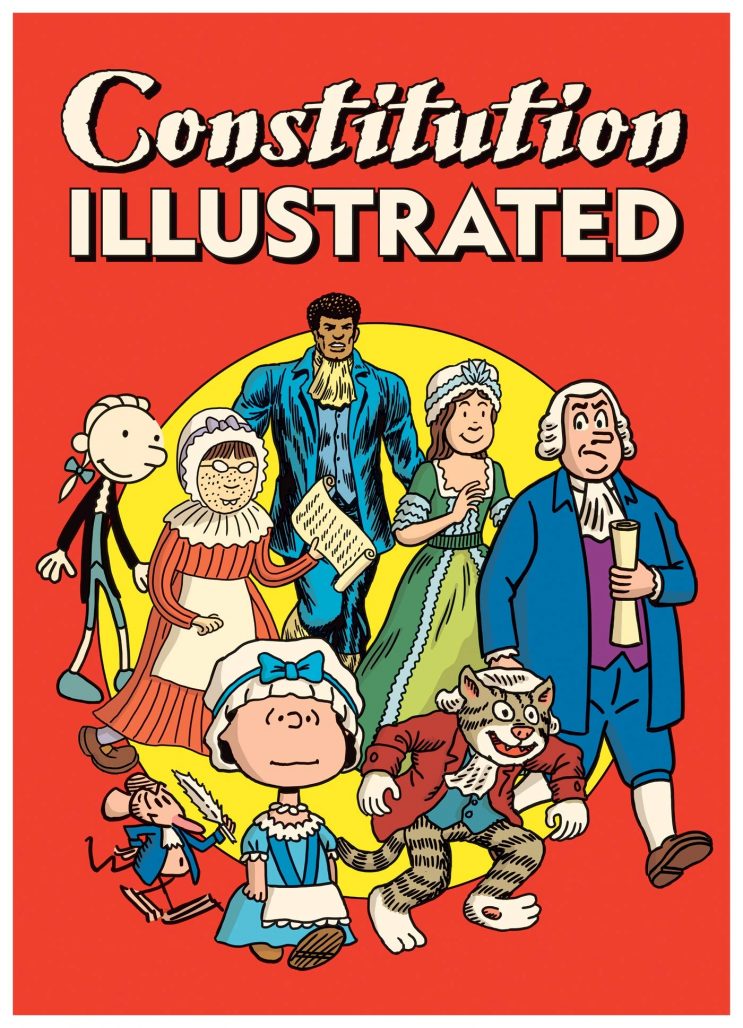
At its core, the United States Constitution lays out the functions and duties of the government, but it also outlines the relationship between the People and their elected officials. As a construct, the Constitution defines our daily lives, allowing us to express ourselves however we want, whether it’s via words, religious beliefs, legal realities, and political persuasion. Yet the actual language of the Constitution, written in late eighteenth-century legal finery, can be difficult to parse for the layman, and some of the concepts can seem foreign for our modern minds. Still, as we know, understanding the Constitution is crucial for the health of our democracy. And that’s where Robert (aka R.) Sikoryak‘s Constitution Illustrated truly shines.
The new book, conveniently pocket-sized and eminently engaging, is Sikoryak’s next entry into his series of books featuring pastiches of comic creations from throughout the ages. And like his previous book Terms & Conditions, which featured the complete text of Apple’s legal agreement (ya know, the pop-up you say you read before Tim Cook secretly takes possession of your soul), the Illustrated Constitution has the full-text of the original document present for readers to peruse.
It’s a wonderful idea and hopefully one that will encourage more people to engage in the civil process, especially as the general election cycle heats up this fall. The following is my conversation with the master cartoonist.
AJ Frost: The Constitution is such an important document to our everyday lives, though it’s quite clear that many people do not understand the contents of it. What was your inspiration to pursue this project?
R. Sikoryak: Well, I wanted to speak to the political moment, but I didn’t want to do anything so topical and urgent that it might be irrelevant by the time it was published. Also, my last book, The Unquotable Trump, was focused on the President, and I didn’t feel like I had anything especially new to say about him. Plus I couldn’t bear to draw him anymore!
So, I went back to my usual way of working, which is to adapt classic or famous texts that people (including me) feel they “ought” to read. And we often hear, from one pundit or another, that the Constitution is under attack, regardless of who is President. I’m certainly sensitive to that, and it definitely feels true to me now. So illustrating the Constitution seemed like a natural project. And the process really made me look deeply at the text for the first time.

Frost: Because you use the text of the Constitution verbatim, what do you believe was the biggest challenge of adapting the idioms and intricacies of the text within the language of comics?
Sikoryak: I’ve often heard that comics should “show and not tell,” and many comics that I love can really compress a big idea into one picture plus a small number of words. But I knew early on that to make this project special, I could not edit, compress, or rewrite the Constitutional text in any way. Even the spelling and punctuation had to be consistent with the original documents. I didn’t want to be accused of changing its meaning. Breaking down the text into small sections made adapting it somewhat easier. Although that made my page count much higher!
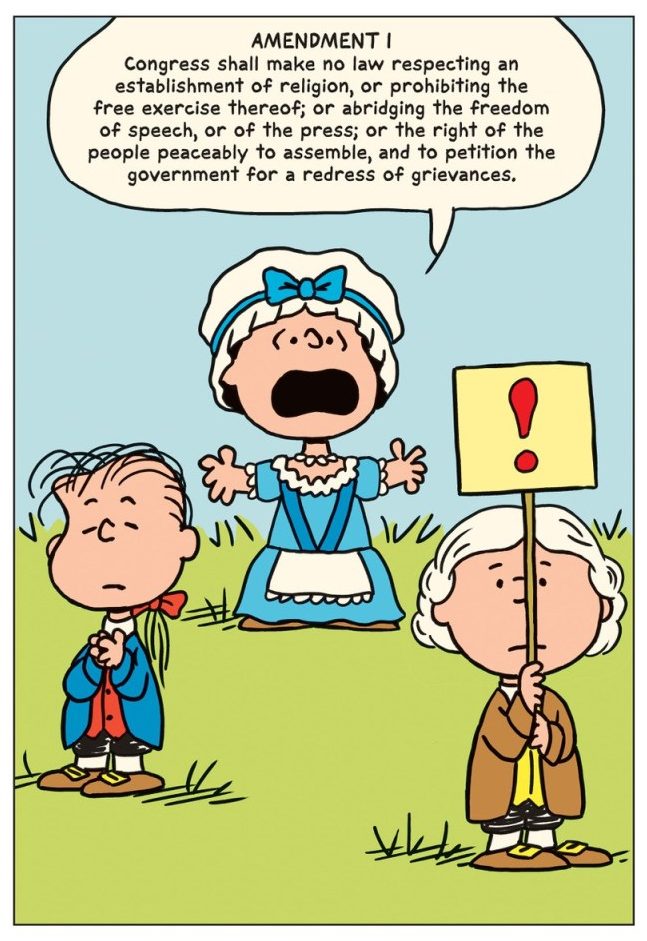
Frost: I’m totally in awe of the many different styles and characters that are included in this handy, little tome. Can you go into the logic of using particular comic strip characters and properties for certain passages of the Constitution? For example, using G.I. Joe for the Second Amendment and Scrooge McDuck for Congress’ Article I power to collect taxes. Was there a deliberate process for each piece of the Constitution or was it more trial and error to determine what was the right fit for each clause?
Sikoryak: There was a lot of trial and error on some pages because portions of the text are quite technical and dense. But the two examples you mentioned were comparatively straightforward, and the solutions came to me quickly. For the Article 1 section on collecting taxes, I wanted to include some character who has an association to money, so Scrooge McDuck was a natural. And, of course, it was clear that the Second Amendment was going to require drawings of guns. I considered using the Punisher, but rather than a lone vigilante, I decided on the cast of G.I. Joe to represent a militia. I was also amused by the idea of converting Joe’s high-tech, modern weapons into Colonial arms and artillery.
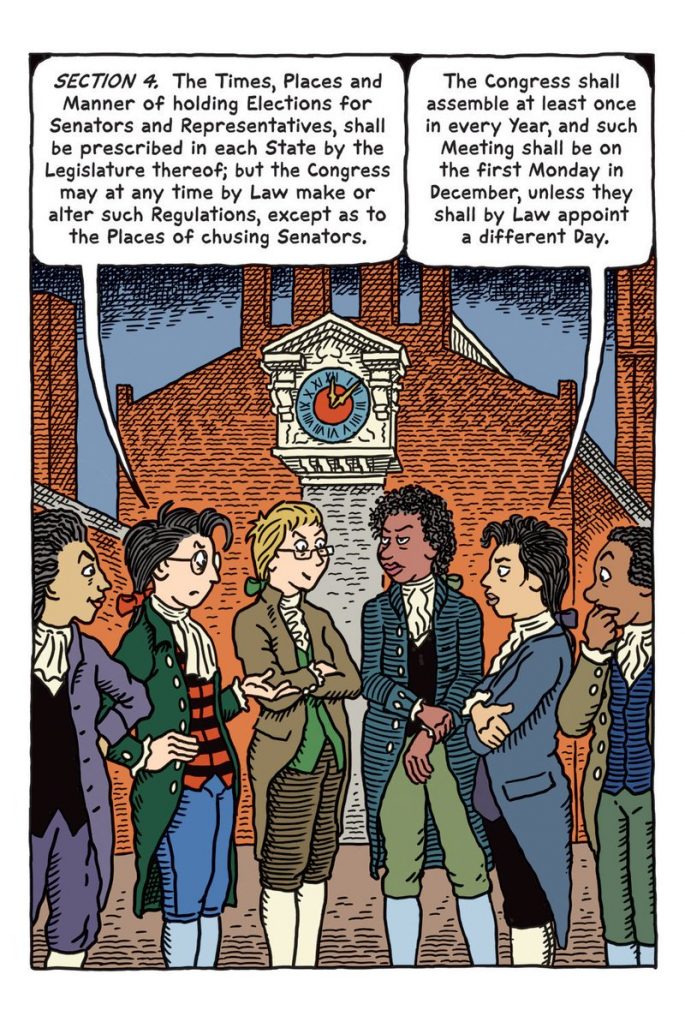
It was important to me to represent a wide variety of characters and diversity of artists, from over 120 years of American comics. I didn’t just want to draw styles I was familiar with or had parodied before. As I worked on the book, I made long lists of possible comics sources. So I would think, can I get the Wimpy Kid in here? How about Dykes to Watch Out For? Or The Katzenjammer Kids? And then I’d be on the lookout for places to include them.
Frost: Can we talk about the trim size for this book? It’s quite small and reminiscent of the many pocket Constitutions that an organization like the ACLU hands out. Was that a deliberate choice?
Sikoryak: Absolutely! Many people say they carry the Constitution everywhere. I wanted to make it a size that feels good in your hand, and that you can fit in a wide pocket or a small bag.
And with one panel per page, the artwork is still at a healthy scale.
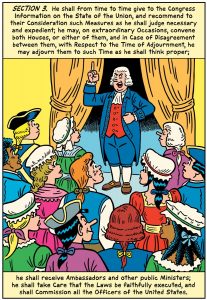
Frost: Because you are depicting the Constitution as written, you don’t skimp over the difficult or problematic aspects of it, such as the Three-Fifths Compromise. How did you approach these sections?
Sikoryak: I approached those sections with a certain degree of unease. Because it’s a comic, I didn’t want people to think I was making light of the subjects or trivializing them in any way. Obviously, I take comics seriously, even when I’m drawing in silly or outdated styles.
As a reader, I’m actually glad that these problematic sections are still visible in the document, even when they’ve been revised by the Amendments, so we can see the terrible compromises that were made from the beginning.
As elsewhere in the book, I tried to find comics that would illuminate the text. For the Three-Fifths Compromise, I drew the characters from the comic strip Mandrake the Magician. In my panel, Mandrake makes two-fifths of Lothar, his African sidekick, disappear. In the original strips, Mandrake uses hypnosis to make his tricks look real, which seemed like a good metaphor in this case.
Even though the word “slavery” is not used in the Constitution until the later Amendments, it is discussed. For some of those portions, I referenced black cartoonists such as George Herriman (Krazy Kat) and Jackie Ormes (Patty–Jo ‘n‘ Ginger). Readers familiar with comics history will recognize extra meanings in their use.
Frost: What surprised you the most about the Constitution as you worked on this book?
Sikoryak: One thing that’s striking is just how many compromises were written into the original Constitution, and how soon they appear. For instance, the Three-Fifths Compromise is near the beginning, in Article 1, Section 2 — which is on page 5 of my version. The problems show up right at the start. But I hope that seeing the whole text laid out this way, and noticing the parts that have been updated or replaced by the later Amendments, helps you appreciate the actual progression of the country.
It’s important to remember that the founders recognized right away that the Constitution wasn’t enough, and that the Bill of Rights was added just a few years later. They wrote it, they ratified it, and they knew it needed more work.
Frost: Who is the book for? Is it for neophytes who know nothing of the American government? Or is it for the cynical person who longs to see government work again and needs to be inspired?
Sikoryak: I hope that a wide audience would see themselves represented in this book. I made a concerted effort to reference comics of all types, by artists of diverse backgrounds. I didn’t want any reader to feel left out.
Ideally, young readers will be intrigued, and older readers will see the text in a new way. Certainly, the Constitution is a document worth rereading and reconsidering.
Frost: We’re in the middle of what is going to be a fraught election year. While immersing yourself in the Constitution for this book, did you walk away with a greater appreciation for the Constitution’s role in and for American society?
Sikoryak: I started drawing this book in early 2019, and I was already pretty distressed about the way the country was going. I couldn’t imagine how fraught things would get over the next year.
I love the aspirational language of the Preamble, it is an inspiring call to “form a more perfect Union.” And I especially appreciate the amendments which extend increased rights to the people. You get the sense that improvements are still possible, even with all the back and forth of politics.
I often think of the quote from Martin Luther King, Jr.: “The arc of the moral universe is long, but it bends toward justice.”
R. Sikoryak’s Constitution Illustrated is now available from Drawn & Quarterly.


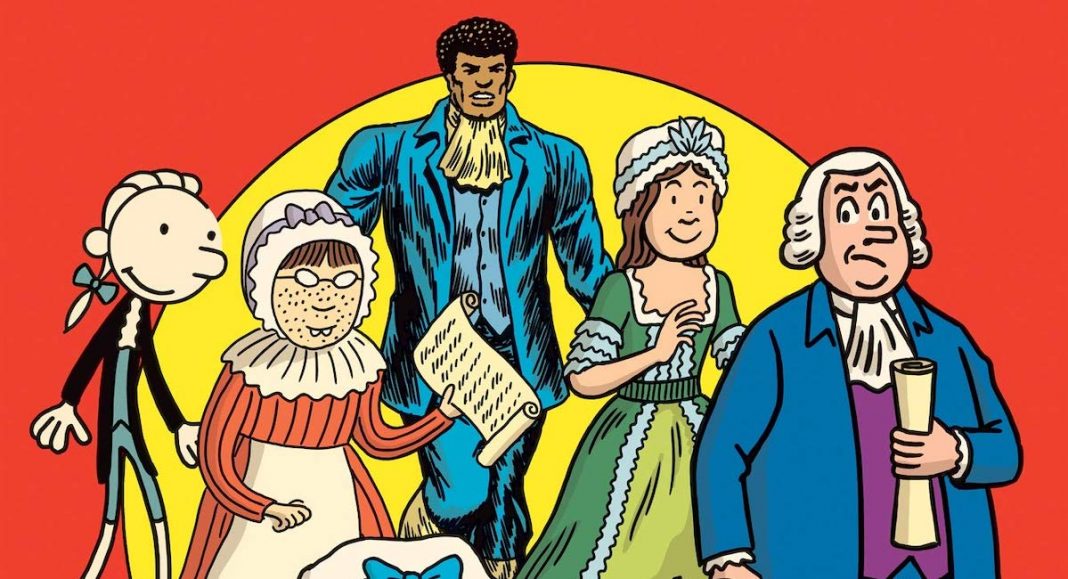






This is such a great book! I bought 2 copies, donated one to my local public library – the teen librarian grabbed it right away!
Comments are closed.